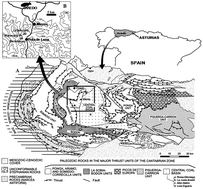Risk assessment of soils contaminated by mercury mining, Northern Spain
Abstract
Analytical results of soil samples taken in three different mercury mining sites in Northern Spain are studied to assess the potential adverse health effects of the exposure to trace elements associated with the mining process. Doses contacted through ingestion and inhalation and the dose absorbed through the skin were calculated using USEPA's exposure parameters and the US Department of Energy's toxicity values. The results of the risk assessment indicate that the highest risk is associated with ingestion of soil particles and that the trace element of major concern is arsenic, the exposure to which results in a high cancer risk value for all the sites ranging from 3.3 × 10−5 to 3.6 × 10−3, well above the 1 × 10−5 probability level deemed unacceptable by most regulatory agencies. Regarding non-cancer effects, exposure to polluted soils yields an aggregate hazard index above the threshold value of 1 for all three sites, with As and Hg as the main contributors. Risk assessment has proven to be a very useful tool to identify the contaminants and exposure pathways of most concern in the soils from metal mining sites, as well as to categorize them in terms of action priority to ensure fitness for use.


 Please wait while we load your content...
Please wait while we load your content...